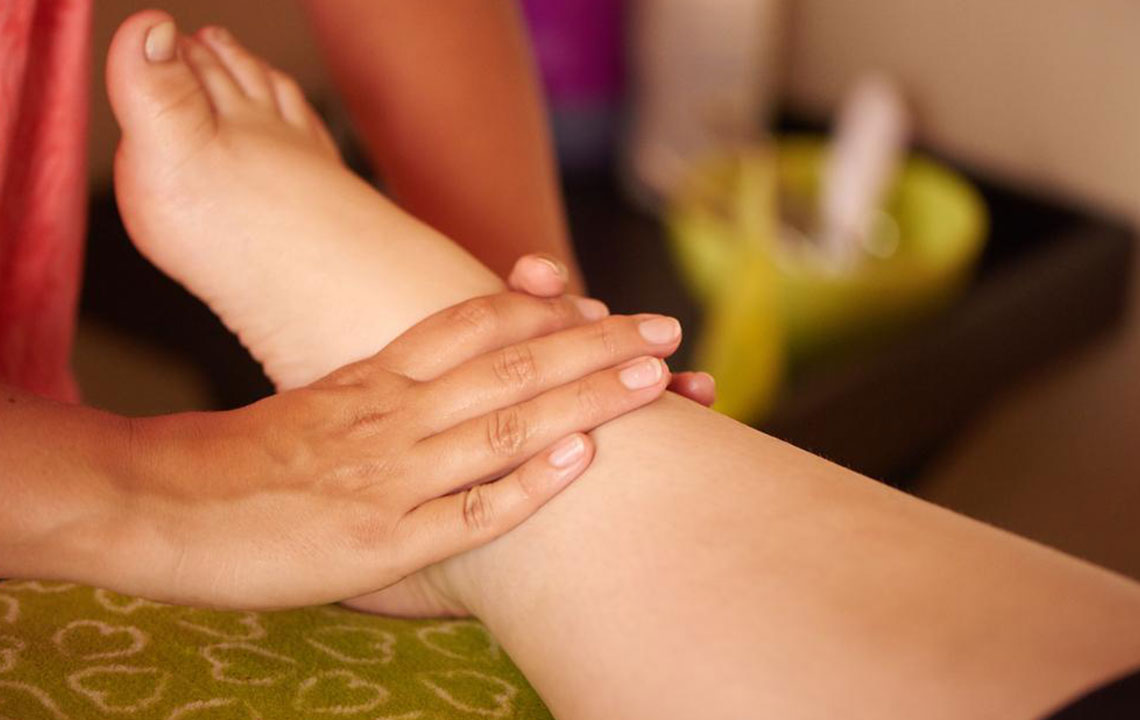Common Causes of Swollen Feet and Ankles

Swelling can cause pain in any part of the body. Your feet and ankle support your whole body weight as you stand or move around. If your feet and ankles suffer from inflammation and pain, look for possible causes and consult your doctor on how to treat the condition.
Causes of swollen feet and ankles
There can be many reasons for your feet and ankle to become swollen and painful. A few of them are listed below:
Pregnancy
Pregnancy puts pressure on the abdominal region and causes various pains and discomfort. One of these can be fluid retention in the legs. It is a normal occurrence. However, if there is excessive inflammation, consult your doctor. It could indicate a condition called Preeclampsia. Preeclampsia could lead to high blood pressure and buildup of protein in the urine. If your ankle swells and you experience headaches and abdominal pain, you need immediate medical attention.
Infected wounds
If you have injured your feet resulting in open wounds, these could get infected and cause swelling. In addition to this, if you have a chronic condition like diabetes, it can complicate matters further.
Diabetes can cause nerve damage which can affect the sensation of pain. So, wounds may go unnoticed, and then the swelling and infection can advance quickly. Therefore, always inspect your feet for injuries.
Chronic diseases
A heart, kidney or liver condition could also cause swelling in your feet and ankles. Heart diseases can lead to fluid retention in the body, especially in the extremities.
Kidney failure is another cause of fluid retention. The kidneys get rid of wastes and toxins in the body through urine. When they fail, a fluid buildup occurs. The liver produces a special protein called albumin. Albumin prevents fluid from leaking out of blood vessels. When the liver does not produce albumin, fluid leaks outside from blood vessels.
When fluid builds up in the body, gravity pulls it down, and it accumulates around the feet and ankles, causing swelling and pain.
Lymphedema
The lymphatic system is an important part of the immune system. Lymph fluid travels through lymphatic vessels and capillaries. Lymph nodes along the system filter the lymph fluid and kill bacteria and other such invasive substances. When lymph nodes are removed due to conditions like cancer, a buildup of lymph fluids, called Lymphedema, can occur. This condition can also lead to fluid accumulation in the feet, and swelling.
Venous insufficiency
The function of veins is to keep moving oxygen-depleted blood back to the heart for purification. Usually, the blood keeps moving smoothly through the veins. Valves in the veins prevent the upward moving blood from flowing back down. However, blood clots in the vein or weakened valves can cause blood leakage, and as usual, gravity helps direct the fluids down to the feet and ankles. If you suffer from swollen feet and ankles, you should also get yourself checked for venous insufficiency or blood clots in the veins.
Sprains and fractures
Ankle swelling occurs in response to sprained ankles or broken bones in the feet. These are irritating and painful injuries that put you out of action for a while. You have to use protective wrapping around your ankles or put your feet in plaster casts in case of broken bones, and rest for a while.
Medication side effects
Some medicines can cause inflammation in the feet and ankles. It depends on the individual as well as the medicine. Hormonal Replacement Therapy medicines and Calcium channel blockers have side effects. Non-Steroidal Anti Inflammatory Drugs (NSAIDs) and diabetic medications also trigger ankle and foot swelling. Consult your doctor if the swelling happens soon after taking a new medicine.
Other causes of swollen feet and ankles
Foot swelling might occur due to causes like a reaction to insect bites, Arthritis, obesity, and hypothyroidism. Tight clothing that impairs blood flow can also cause swelling in the legs. Swollen feet and ankle can also be a symptom of Varicose Veins.
Simple tips to treat swollen feet and ankles
Inflamed feet and ankle are symptoms of a deeper problem. The best way to treat them is to find the cause and treat it. However, swollen feet and ankles can be painful, and you can take measures to get relief from the pain in natural ways:
Soak your feet in salt water
Add Epsom salt to a bathtub and take a bath. You can also add Epsom salt to a bucket of water and soak your feet and ankles in it to get relief. The solution works well for most conditions like swelling due to pregnancy or due to injury.
Put your feet up
Is your ankle swollen due to pregnancy or injury? You can find relief by elevating your feet. If you are sitting, pull up a small coffee table, put a few pillows on it and prop your feet up. You can also lie down in bed and put your feet up on a stack of pillows. It will help reduce the swelling and pain.
Whatever be the cause of your swollen feet and ankle, consult with your doctor to ensure that it is not indicative of a deeper, serious problem. You can then focus on finding relief from the pain and inflammation through simple treatments.


